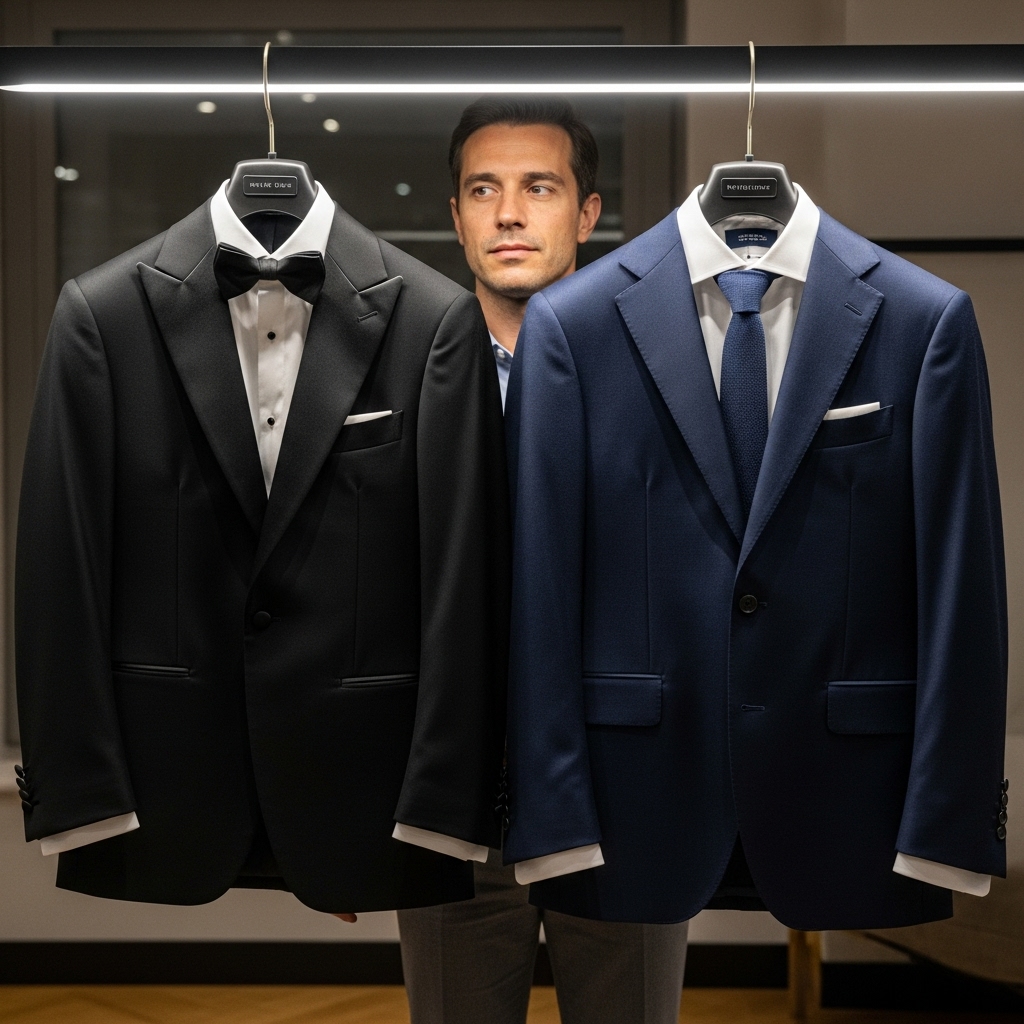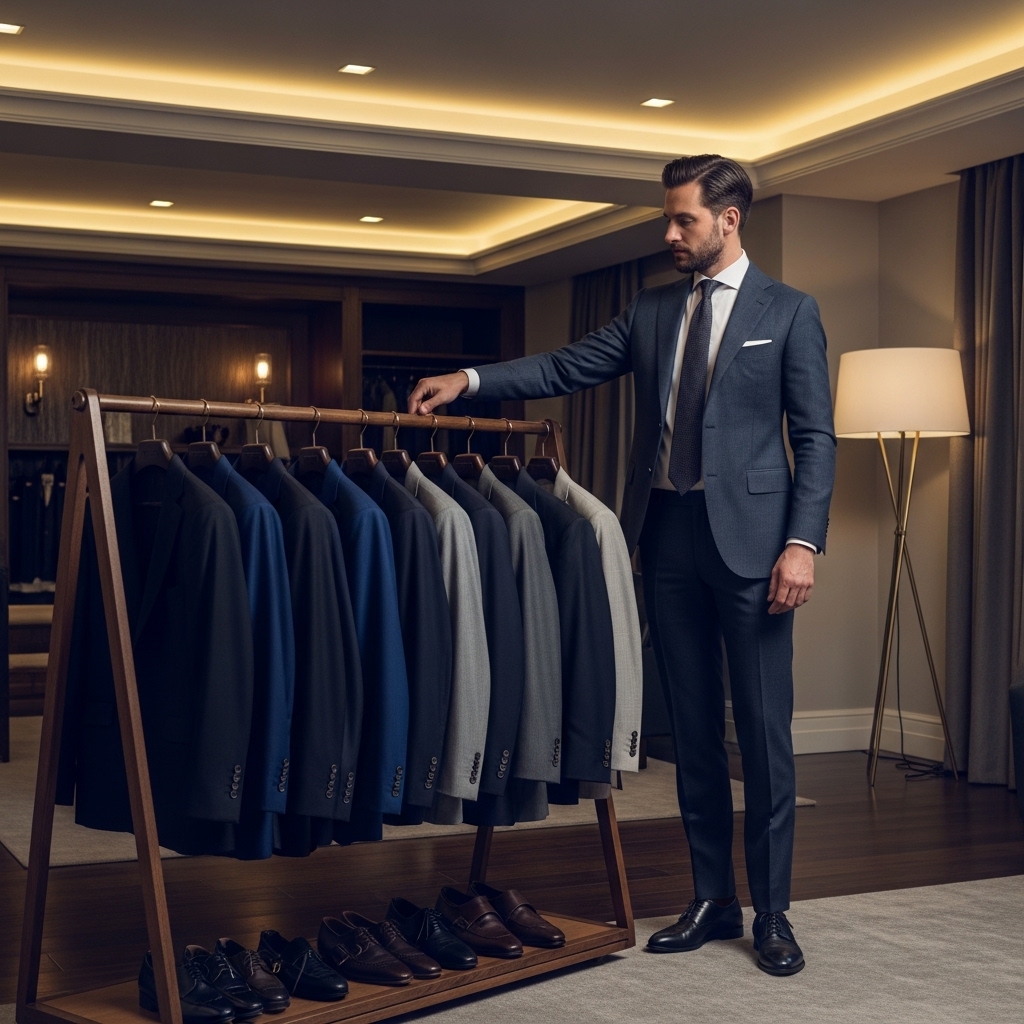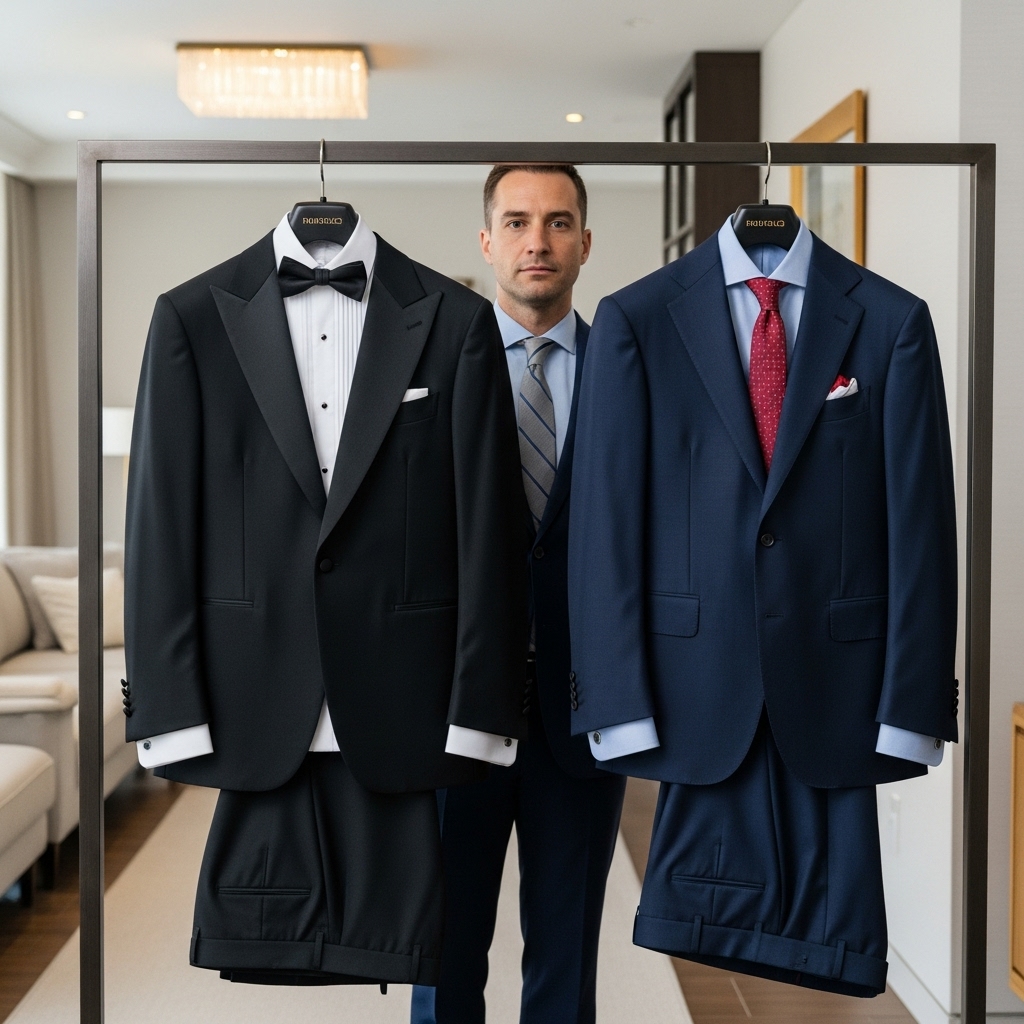If you’ve ever stared at your closet wondering, “Should I wear a dinner suit or a business suit?”, you’re not alone.
At first glance, both look pretty similar — jackets, trousers, a crisp shirt. But when it comes to fashion rules, the difference between a dinner suit and a business suit is all about purpose, fabric, and style.
Let’s break it down in simple terms so you’ll always dress right for the occasion.
Table of Contents

What Is a Business Suit?
A business suit is what you wear to work, meetings, or formal professional settings.
It’s designed to make you look sharp, confident, and reliable — without looking flashy.
Typical business suit features:
- Made from wool, cotton, or blended fabric for all-day comfort.
- Comes in neutral colors like navy, gray, or charcoal.
- Worn with a tie (optional these days) and dress shoes.
- Designed for daily or office wear.
When to wear it:
- Office meetings and corporate events
- Job interviews
- Business dinners or conferences
- Client presentations
Think of it as your go-to armor for professionalism.

What Is a Dinner Suit?
A dinner suit (often called a tuxedo in the U.S.) is your formal evening outfit — the kind you wear when the invitation says “black tie.”
It’s less about work and more about celebration and sophistication.
Typical dinner suit features:
- Made from high-quality materials like wool or satin.
- Satin or silk lapels (often shiny).
- Worn with a bow tie instead of a necktie.
- Usually black or midnight blue.
- Paired with patent leather shoes and a formal shirt.
When to wear it:
- Weddings and formal receptions
- Charity balls or galas
- Award nights or formal dinners
If a business suit says “I mean business,” a dinner suit says “I’ve arrived.”

Key Differences: Dinner Suit vs Business Suit
| Feature | Dinner Suit | Business Suit |
|---|---|---|
| Purpose | Formal events, evening wear | Professional, daytime wear |
| Lapels | Satin or silk | Standard fabric |
| Tie Style | Bow tie | Regular tie or open collar |
| Shirt Type | Formal white shirt with studs | Standard dress shirt |
| Color | Usually black or midnight blue | Neutral tones like navy or gray |
| Shoes | Patent leather | Leather oxford or derby |
| Occasion | Weddings, galas, black-tie events | Work, meetings, interviews |
How to Choose Between Them
Here’s a simple trick:
If it’s before 6 PM, wear a business suit.
If it’s after 6 PM and formal, wear a dinner suit.
Style Tip 1: Go for Fit Over Price
A well-fitted suit — even if it’s affordable — looks ten times better than an expensive one that doesn’t fit right.
Style Tip 2: Keep It Simple
You don’t need to go overboard with accessories. A clean, elegant look always wins.
Style Tip 3: Confidence Is the Final Touch
No matter which suit you wear, stand tall, smile, and carry yourself with confidence.
That’s what truly makes an impression.
Real-Life Example
Imagine you’re invited to a company awards night. You show up in a clean, fitted dinner suit — sleek black, bow tie, polished shoes.
Your colleague, thinking it’s just another meeting, wears a gray business suit.
Both look good, but yours says “I came for the occasion.” That’s the power of understanding the difference.
Why Knowing the Difference Matters
In fashion, context is everything. Wearing a dinner suit to a business meeting might look overdressed.
Showing up to a wedding in a regular work suit might look underdressed.
Understanding the difference helps you appear confident, polished, and respectful — no matter where you are.
Final Thoughts
At the end of the day, both the dinner suit and business suit are timeless, but they tell different stories.
The business suit is your badge of professionalism.
The dinner suit is your statement of celebration.
So next time you’re getting dressed, remember the moment — and let your suit match it.
